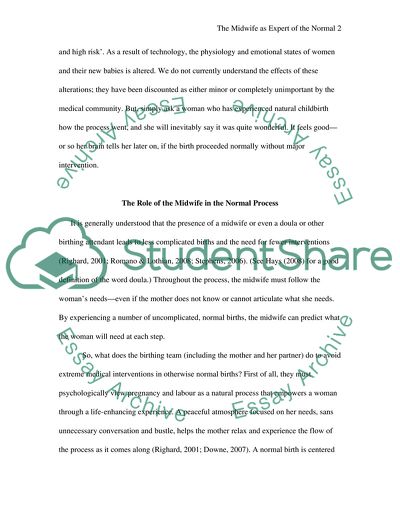Cite this document
(The Role of the Midwife in the Normal Process Research Paper, n.d.)
The Role of the Midwife in the Normal Process Research Paper. Retrieved from https://studentshare.org/family-consumer-science/1725974-discuss-how-the-midwife-is-the-expert-of-the-normaland-how-she-may-promote-normality-in-childbirth
The Role of the Midwife in the Normal Process Research Paper. Retrieved from https://studentshare.org/family-consumer-science/1725974-discuss-how-the-midwife-is-the-expert-of-the-normaland-how-she-may-promote-normality-in-childbirth
(The Role of the Midwife in the Normal Process Research Paper)
The Role of the Midwife in the Normal Process Research Paper. https://studentshare.org/family-consumer-science/1725974-discuss-how-the-midwife-is-the-expert-of-the-normaland-how-she-may-promote-normality-in-childbirth.
The Role of the Midwife in the Normal Process Research Paper. https://studentshare.org/family-consumer-science/1725974-discuss-how-the-midwife-is-the-expert-of-the-normaland-how-she-may-promote-normality-in-childbirth.
“The Role of the Midwife in the Normal Process Research Paper”, n.d. https://studentshare.org/family-consumer-science/1725974-discuss-how-the-midwife-is-the-expert-of-the-normaland-how-she-may-promote-normality-in-childbirth.


